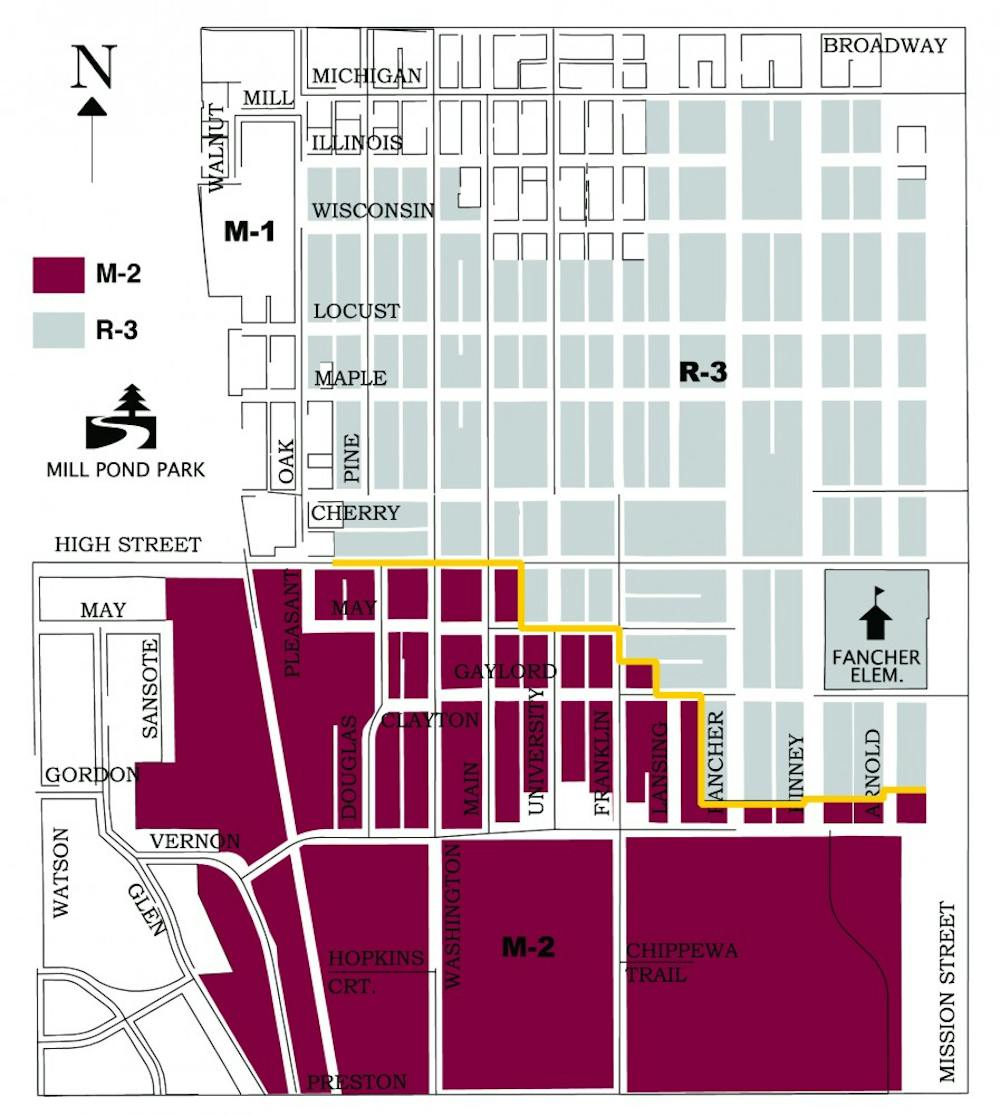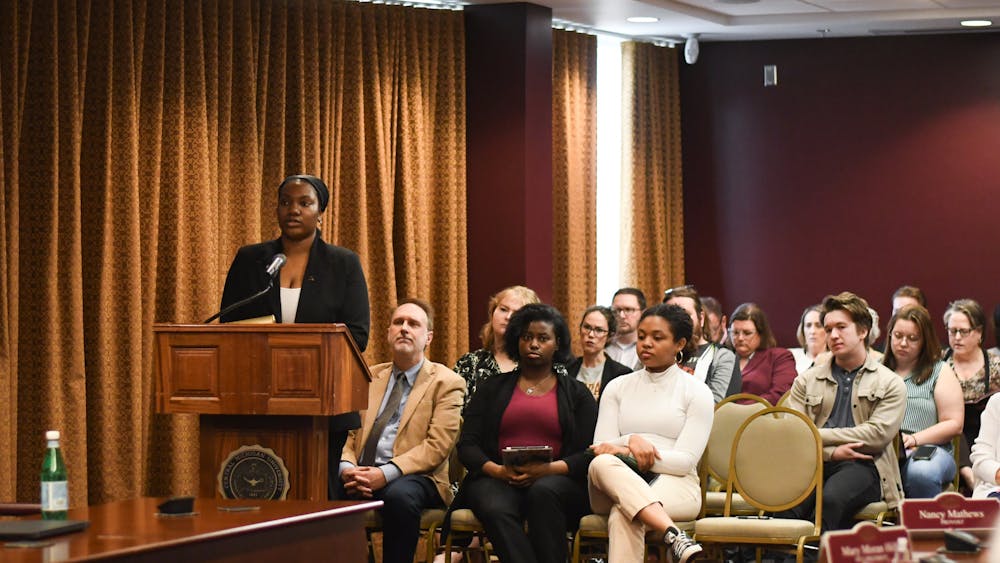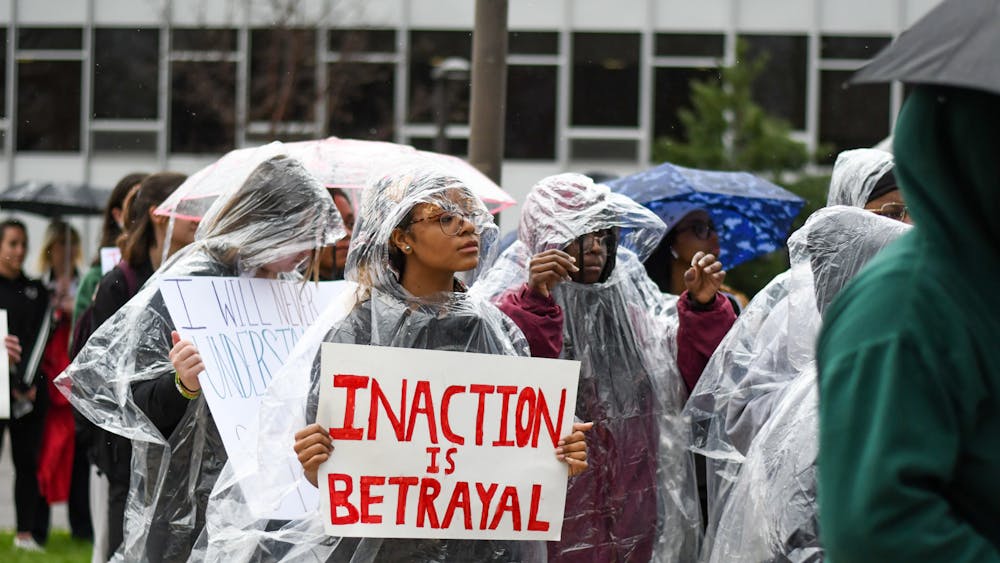Citizens fear more high-density student housing
City residents had stern words for students living in their neighborhoods during a public meeting.
Five citizens spoke out at public meeting Jan. 12 against new developments and student behavior, including Welcome Weekends and nuisance parties during the year. A code recommendation would have allowed developers to continue using the city's two-fold improvement approval process. Developers must get new construction and improvement projects approved by two city boards before they can proceed.
Residents feared the language would have allowed developers to build more high-density housing in the M-2 district. For them, more student housing in the district will negatively impact the standard of living for non-students in the city.
"It seems to me that what we've been seeing is a creeping erosion of the citizens' quality of life," said Ella Jo Regan, who lives on South Kinney Street. "There's an exception here and then a loophole there, and pretty soon the (student) density increases and the problems increase."
The anti-student rhetoric was shared by all those who spoke during the public hearing. Each resident also agreed the concept of an overlay was the best option.
An overlay would have limited improvements or new developments on M-2's border with R-3, but nowhere else in the district. The overlay was one of three recommendations weighed by the Planning Commission, and chose the "as is" option, keeping the current approval process. Residents said ignoring an overlay recommendation was a kind of betrayal.
"When high-density housing was permitted in my neighborhood, we had loud, out-of-control and violent parties near family homes," said Lynn Simons, who lives on High Street. "Trash littered my neighborhood and we had loud pedestrians on our sidewalks. I believe asking developers what is best for my neighborhood is like asking a fox to lead a security firm for the hounds. (There has been a) loss of families who have moved on, feeling forsaken by this city government."
Residents also called for city commissioners to table voting on a recommendation so it could go back to the planning board for further consideration.
Commissioners passed this motion. They also tabled any talk of codification until after an upcoming joint meeting between the Planning and City Commissions.
Buffering the noise
During Mount Pleasant's 2014 update to its master plan, planning commissioners and other city officials grappled with the concept of separating existing high-density student housing from the residential neighborhoods they butt up against. This includes Registered Student Organization houses for Greek Life.
One major problem area identified by residents is where the M-2 and R-3 districts meet. The districts align at Washington and High streets and then zig-zag down to Mission and Bellows streets. Residents living in R-3 said they have experienced all manner of "bad behavior" from students in the form of nuisance parties, late-night noise and littered trash.
One idea proposed by the Planning Commission was to create a "buffer zone" of young professional housing between the fault line of students and residents at M-2 and R-3. This would require developers and landlords to convert their properties to single family dwellings, an option most of them were against when they met with the Planning Commission in the summer.
Residents were not invited to take part in the buffer zone or codification discussions. They viewed the Jan. 12f meeting as one of their last chances to have a voice they felt was wholly underrepresented.
"The discussion with developers was a nice give and take and was less staged than (a meeting), but at the time I was concerned with why you didn’t have that conversation with residents," said Susan Horgen, a resident of S. Kinney Street. "Table this and let's have time to sit down and have the citizens in the neighborhood involved."
The buffer zone idea might have solved the problem, but it was the most costly and detrimental for developers. Planning Commissioner and landlord Keith Cotter said in a July work session that a landlord could make far more money collecting rent from four or five students than he could from a single family.
Nancy Fulton, who lives with her husband Henry on S. University Street, saw this as an affront.
"As I see it, the duty of the city commission is to borrow the police model, to serve and protect all the members of the city, and to not give preference to those who want to make money," she said.
Commissioner Tony Kulick said if a buffer zone was what all parties wanted, they should have considered it decades ago while it was still feasible. He added if the issue was with student behavior, maybe police should clamp down harder on wild parties.
Director of Public Safety Glenn Feldhauser had mixed feelings about how the problem should be dealt with, hoping compliance with the city codes trumped the need for strict punishment. However, he did agree things have been getting out of hand.
"Our whole philosophy is to keep people moving during Welcome Weekend, and that seems to work well," Feldhauser said. "I don't know if it's the bigger weekends that cause the problems. It's no exaggeration about the things (residents) say have happened. I imagine if you lived close to (student housing), you'd see it differently."





